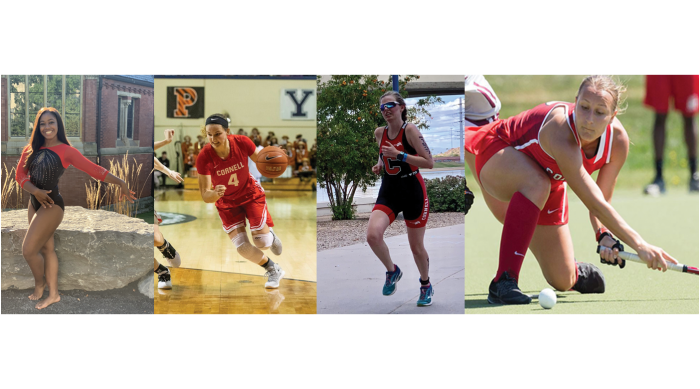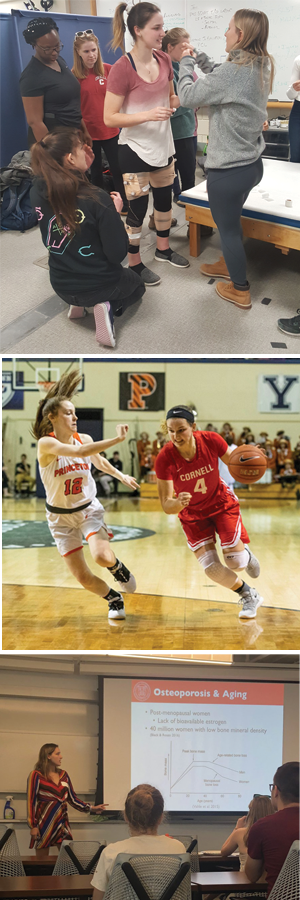
Spotlight on BME Student Athletes

Step into a BME 3410 class on any given day and you might see students hopping on one leg and covered in reflective markers adhered to major joint locations from head to toe. You won't be witnessing a bold new dance, but rather a test for measuring movement explosiveness and repetitive hopping while software tracks a 3D map of the markers. From here, students dive into coding and calculations.
Systems Mechanobiology, required for students in the biomechanics and mechanobiology (BMMB) concentration, uses labs like this one to study how mechanical forces orchestrate the formation, function, and disease pathogenesis in the human body, from molecular to organ systems. The course was created and led by Meinig School professor and founding director of undergraduate studies Jonathan Butcher.
“Engineering really comes alive in the hopping lab,” says Butcher, “when students with previous leg injuries compare their kinematics and biomechanics to their other leg and those of non-injured bodies.” This was especially relevant last spring when nearly a third of the class was athletes, most members of a varsity sport.
“[BMMB] is a highly quantitative, rigorous concentration in the BME major,” said Butcher, “so I was intrigued to see so many athletes, already committed to a busy training schedule, enrolled." It turns out this was no coincidence.
A survey revealed that athletics drew these students to the BMMB concentration. Danielle Jorgenson '20 plays for Cornell’s varsity women's basketball team and confirmed a useful synergy between the two interests. “I use my knowledge from [BME and BMMB] to improve my injury prevention and best methods for training/stretching, and to yield the best results on the court.”
Jorgenson found the hopping lab particularly inspiring when she "could see how it could be used to analyze athletes to maximize their explosion when going up for a lay-up or jumping for a rebound. Data processing and analysis are important avenues for preventing common injuries such as ACL tears.”
In fact, Jorgenson's interest in BMMB originated from injury―her own. “I tore my ACL during freshman season and had a lot of rehabilitation. I became fascinated with the recovery process. The concentration specifically is important for understanding the benefits of weight-lifting and high-intensity interval training to increase bone mass and reduce lactic acid build up during workouts.”
Emma Stowe '20 of Cornell’s triathlon team was similarly drawn to BMMB. "Knowing the physical limits of my body in terms of injury and endurance from my experiences running, biking, and swimming, helps me better internalize many of the concepts covered.”
Samantha Henry '20 of Cornell's varsity gymnastics team is interested in "how movement changes with different injuries and impacts over time.”
So how do these student athletes juggle everything? Varsity field hockey member Kirsten Pienaar '20 said the athletics season's rigid structure helps her balance workload. “It sounds counter-intuitive, but when you have to give up three hours for training every day, you use what remains much more effectively.”
As for whether these students will merge these two interests in the future, Butcher outlines a variety of different career paths for BMMB students in the class. Jorgenson sees a path in concussion research toward developing better helmets. “It would allow me to stay extremely close to sports and improve the sports experience for future generations of athletes.”
Whatever their futures hold, it’s clear these student athletes are finding a way to succeed and grow by developing lasting connections between their physical and intellectual pursuits.

